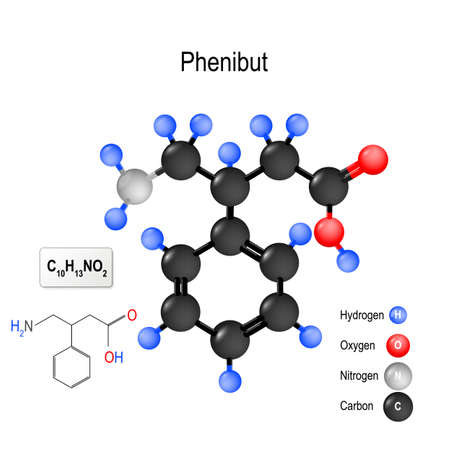1. Understanding the Causes of Stress in Dogs
To effectively reduce stress and anxiety in dogs, it’s essential to first understand what triggers these feelings. Just like people, dogs can become anxious or stressed due to a variety of factors. Identifying these causes allows pet parents to take proactive steps toward creating a calm environment for their furry friends. The most common triggers of canine stress include changes in routine, separation from family members, loud noises, and unfamiliar environments. Let’s explore these causes in detail:
| Trigger | Description | Common Examples |
|---|---|---|
| Changes in Routine | Dogs thrive on consistency, so even small shifts can be unsettling. | Moving homes, new work schedules, different feeding times |
| Separation | Many dogs experience anxiety when left alone or separated from their owners. | Being home alone during the day, boarding at kennels |
| Loud Noises | Noises that are sudden or intense can easily startle dogs and cause stress. | Thunderstorms, fireworks, construction sounds |
| Unfamiliar Environments | New places or encounters can overwhelm dogs who are sensitive to change. | Vet visits, traveling, meeting new pets or people |
By being aware of these stressors, dog owners in the U.S. can better support their pets’ emotional well-being. Recognizing the signs of stress early—such as excessive barking, pacing, panting, or hiding—enables timely intervention and helps prevent anxiety from escalating.
Creating a Calming Home Environment
One of the most effective ways to reduce stress and anxiety in dogs is by making your home a sanctuary where they feel safe and secure. Dogs, just like people, thrive in environments that are predictable, comfortable, and free from unnecessary stressors. Here are some practical tips to help you create a calming atmosphere for your furry friend:
Set Up Cozy Spaces
Designate specific areas in your home where your dog can retreat whenever they feel overwhelmed. A cozy corner with their favorite bed, blankets, and a few beloved toys can go a long way in providing comfort. If possible, use crates or covered dens as many dogs find enclosed spaces reassuring.
Soothing Sounds and Music
Music can have a powerful effect on a dogs mood. Playing soft classical music or specially designed pet-calming playlists can help mask outside noises that might trigger anxiety, such as thunderstorms or fireworks. Consider using white noise machines if your neighborhood is particularly noisy.
Minimize Sources of Stress
Identify and reduce household stressors that may affect your dog. This includes loud appliances, frequent visitors, or even intense arguments. Consistency is key—try to keep daily routines (feeding times, walks, playtime) as predictable as possible.
Quick Reference Table: Calming Home Tips
| Tip | Description |
|---|---|
| Cozy Area | Create a soft, inviting spot with bedding and toys for your dog to relax in. |
| Calming Music | Play gentle tunes or white noise to soothe nerves and drown out sudden sounds. |
| Consistent Routine | Stick to regular feeding, walking, and play schedules for predictability. |
| Limit Loud Noises | Avoid using loud appliances near your dog’s space; close windows during storms or fireworks. |
| Scent Therapy | Use calming pheromone diffusers designed for dogs (like Adaptil). |
By thoughtfully arranging your home environment with your dog’s well-being in mind, you’ll not only help reduce their anxiety but also foster a deeper sense of trust and security between you and your canine companion.
![]()
3. Establishing Consistent Routines
One of the most effective ways to reduce stress and anxiety in dogs is by maintaining consistent daily routines. Dogs thrive on predictability, and a regular schedule helps them feel secure, relaxed, and confident in their environment. When your dog knows what to expect each day—whether it’s mealtime, walks, or playtime—they are less likely to experience uncertainty and anxiety.
Benefits of a Regular Schedule
A structured routine provides your dog with clear expectations and can prevent many behavioral problems that stem from stress. Here’s how regularity in key activities supports your dog’s well-being:
| Activity | Benefit for Your Dog |
|---|---|
| Feeding Times | Promotes digestive health, prevents overfeeding or underfeeding, and builds trust between you and your pet. |
| Walks | Reduces boredom, channels energy appropriately, and gives your dog a sense of purpose each day. |
| Playtime | Relieves stress through exercise, enhances mental stimulation, and strengthens your bond with your dog. |
Tips for Creating a Consistent Routine
- Feed your dog at the same times every morning and evening.
- Schedule daily walks around the same time to help regulate bathroom habits and provide outdoor enrichment.
- Set aside dedicated play sessions so your dog learns when to expect active engagement.
Remember: Flexibility Matters Too
While consistency is crucial, life can be unpredictable. If you need to adjust your schedule occasionally, try to make changes gradually. Small shifts are easier for dogs to adapt to than abrupt alterations. By prioritizing a steady routine, you’ll help your dog feel safe, calm, and happy—key factors in reducing stress and anxiety.
4. Exercise and Mental Stimulation
One of the most effective ways to reduce stress and anxiety in dogs is by providing them with regular exercise and mental stimulation. Just like humans, dogs need physical activity to release pent-up energy and maintain emotional balance. A daily walk or playtime at the dog park can help minimize anxiety-driven behaviors such as excessive barking, destructive chewing, or restlessness.
Why Daily Exercise Matters
Physical exercise not only keeps your dog healthy but also helps regulate mood and reduce stress hormones. Dogs who get enough physical activity are generally calmer and less likely to develop behavioral problems. The American Kennel Club recommends at least 30 minutes to two hours of activity per day, depending on your dogs breed, age, and health status.
Mental Stimulation: Keep Their Minds Busy
In addition to exercise, mental stimulation is essential for a well-balanced dog. Engaging activities like puzzle toys, treat-dispensing balls, and training games challenge your dogs brain and prevent boredom—which can be a major source of anxiety. Training sessions using positive reinforcement also strengthen your bond and give your dog a sense of purpose.
Examples of Engaging Activities
| Activity Type | Description |
|---|---|
| Puzzle Toys | Toys that hide treats inside, requiring problem-solving skills to access the reward. |
| Interactive Games | Games like hide-and-seek or fetch that involve both you and your dog. |
| Training Sessions | Short sessions teaching new tricks or reinforcing basic commands using treats and praise. |
Tips for Success
- Rotate toys regularly to keep things fresh and exciting.
- Start slow with new activities to avoid overwhelming your dog.
- Incorporate short bursts of training throughout the day rather than one long session.
By prioritizing daily exercise and mental enrichment, you’ll help your dog feel more secure, confident, and relaxed—making it one of the most proven methods to alleviate stress and anxiety in dogs.
5. Behavioral Training and Positive Reinforcement
One of the most effective ways to help dogs overcome stress and anxiety is through behavioral training that emphasizes positive reinforcement. This approach not only addresses unwanted anxiety-driven behaviors but also helps build your dog’s confidence in a safe and supportive manner.
Understanding Positive Reinforcement
Positive reinforcement means rewarding your dog for desirable behavior instead of punishing them for mistakes. This method encourages repeat behaviors by making good experiences more memorable for your pet. Rewards can be treats, praise, toys, or extra playtime—whatever motivates your dog most.
Common Anxiety-Driven Behaviors Addressed by Training
| Behavior | Training Goal | Positive Reinforcement Example |
|---|---|---|
| Barking or whining when left alone | Promote calmness during absences | Treats given for quiet moments before leaving the room |
| Pacing or restlessness during storms | Build tolerance to loud noises | Praise and treats after remaining calm during thunder sounds |
| Avoidance of new people or places | Increase comfort in new situations | Toys or treats introduced when meeting new people or exploring new areas |
Steps to Implement Positive Reinforcement Training
- Identify specific anxiety triggers and target behaviors.
- Choose a reward that highly motivates your dog.
- Reward calm and confident behavior consistently as soon as it occurs.
- Gradually increase difficulty, such as longer absences or louder noises, always reinforcing positive responses.
Tips for Success
- Stay patient—progress may be slow but consistency pays off.
- Avoid punishment, as it can worsen anxiety and damage trust.
- If your dog’s anxiety persists despite training, consult a professional dog trainer or animal behaviorist familiar with positive reinforcement techniques.
By using proven positive reinforcement strategies tailored to your dog’s unique needs, you can help reduce stress and foster a more relaxed, confident companion.
6. Calming Products and Natural Remedies
For many pet parents in the U.S., managing a dogs stress and anxiety often includes the use of calming products and natural remedies. These solutions can provide additional support alongside behavioral training and environmental modifications. Below, we review some of the most popular options available and widely used in American households.
Calming Treats
Calming treats are a convenient way to help ease your dogs nerves during stressful situations, such as thunderstorms or fireworks. These treats typically contain ingredients like L-theanine, chamomile, or CBD oil, which are known for their soothing properties. Many pet owners find these treats effective for mild to moderate anxiety, though its important to choose high-quality products and follow dosing guidelines.
Anxiety Vests
Anxiety vests—such as the ThunderShirt—are designed to apply gentle, constant pressure to your dogs torso. This sensation is similar to swaddling a baby and can have a calming effect on many dogs. They are especially popular in the U.S. for events like 4th of July fireworks or during travel.
Pheromone Diffusers
Pheromone diffusers release synthetic versions of natural dog-appeasing pheromones into your home environment. Products like Adaptil plug-ins are widely recommended by veterinarians and behaviorists across America for creating a sense of security in anxious pets.
Herbal Supplements
Herbal supplements containing valerian root, passionflower, or melatonin are increasingly being chosen by American pet owners seeking holistic approaches to stress relief. Always consult with your veterinarian before introducing new supplements to ensure safety and proper dosage.
Comparison Table: Popular Calming Products in the U.S.
| Product Type | Main Ingredients/Features | Typical Use Case | Considerations |
|---|---|---|---|
| Calming Treats | L-theanine, Chamomile, CBD Oil | Situational (storms, travel) | Check for allergies; follow dosage instructions |
| Anxiety Vest | Gentle compression fabric | Noisy events, separation anxiety | May require acclimation period |
| Pheromone Diffuser | Synthetic dog appeasing pheromones | Generalized anxiety at home | Replace refills every 30 days; not effective for all dogs |
| Herbal Supplements | Valerian root, Passionflower, Melatonin | Mild chronic anxiety, sleep issues | Consult vet for interactions with other meds |
Final Thoughts on Calming Products and Remedies
The effectiveness of these products can vary from dog to dog. Its always best to combine them with positive reinforcement techniques and consult your veterinarian when trying new remedies. With patience and the right approach, many U.S. dog owners find these calming aids provide significant relief for their anxious pets.
7. When to Seek Professional Help
While many dogs respond well to proven home-based methods for reducing stress and anxiety, there are situations where professional help is necessary. Recognizing when your dog’s anxiety has become severe or unmanageable is crucial to their health and happiness. Here’s a guide to help you determine when it’s time to consult a veterinarian or an animal behaviorist.
Signs Your Dog Needs Professional Assistance
| Behavioral Signs | Physical Symptoms | Situational Triggers |
|---|---|---|
| Persistent destructive behavior (chewing, digging) | Excessive panting or drooling unrelated to heat or exercise | Anxiety that escalates despite using calming techniques |
| Aggression towards people or other animals | Loss of appetite or sudden weight loss | Panic attacks during storms, fireworks, or when left alone |
| Self-harm (licking, biting, scratching) | Frequent gastrointestinal issues (vomiting, diarrhea) | Refusal to engage in normal activities or play |
| Extreme withdrawal or hiding for long periods | Changes in sleep patterns (insomnia, excessive sleep) | Anxiety interfering with everyday life at home |
Who Should You Consult?
- Veterinarian: If your dog’s symptoms include physical health concerns such as loss of appetite, vomiting, diarrhea, or drastic changes in behavior, a vet can rule out medical causes and recommend treatments like anti-anxiety medications.
- Certified Animal Behaviorist: For persistent behavioral problems not resolved through training and enrichment, a certified animal behaviorist can design a personalized plan using evidence-based techniques.
- Certified Dog Trainer: Trainers specializing in anxiety-related behaviors can help reinforce positive habits and reduce triggers under professional supervision.
The Importance of Timely Intervention
If your dog’s anxiety is impacting their quality of life or safety—or if your efforts haven’t improved their condition—don’t hesitate to seek help. Early intervention increases the chances of successful treatment and prevents further complications. Remember, seeking professional support is an act of love and responsibility for your furry companion.


